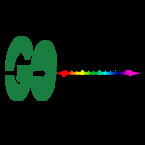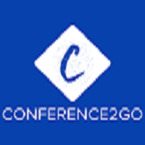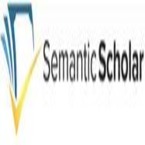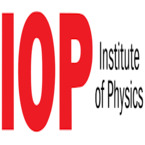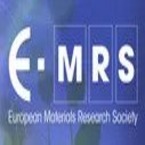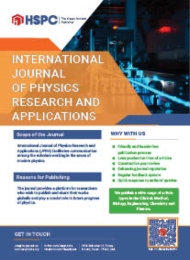Theme: Latest innovations in Quantum Physics and Technology
QUANTUM PHYSICS 2023
It’s our pleasure to welcome you all to the “World Congress on Quantum Physics” which will be held during on September 27-28, 2023 Webinar. The conference adopts a timely theme “Latest innovations in Quantum Physics and Technology”
This conference aims to bring together the prominent researcher’s academic scientists and research scholars to exchange and share their experiences in every allied concept of Quantum Physics. The Committee is looking forward to organizing an exceptional meeting with new, interesting sessions & discussion and to meet new people where you can share your subject and passion.
The conference on Quantum Physics will focus on many interesting and knowledge empowering & enhancing scientific sessions and covers all frontier topics & concepts in Physics.
Why to attend Quantum Physics 2023?
This is your finest opportunity to access the largest assemblage of participants from universities, colleges, research centres, societies, organisations, labs, groups, communities, and enterprises, etc., with members from all over the world focused on Quantum physics and Quantum technology. We wish to organise a global meeting where researchers from various controls may successfully trade data. The purpose of bringing the general public to the meetings is to catalyse empowering trades and connections between professionals in various sectors, ranging from physical science to engineering. It will create new multidisciplinary systems and allow participants to share their knowledge and data in order to achieve faster and better results.
Quantum physics and quantum technology have not only aided in the advancement of several disciplines of research and technology, but have also contributed to the betterment of human life quality. The main goal of the Quantum Physics 2023 conference is to allow attendees to connect, interact, and exchange creative ideas in diverse areas of quantum physics and technology. The pleasure of attending Quantum Physics 2023 entails progressive improvement and growth in your way to doing things, as well as a broader perspective on things in international diversity.
Target Audience:
1. Physics Scientists
2. Research students and Research Institute
3. Professors, Students, Researchers from Physics
4. Managers and Business Intellect Professionals
5. Business Professionals from Electronic Industries
6. Advertising and Promotion Agency Managers
7. Delegates from Physical and Materials Science societies and Associations
Track 1: Quantum Technology:-
Quantum technology is a field of study based on quantum mechanics that includes quantum entanglement and quantum superposition (the physics of sub-atomic particles) the truth is that you don't need to grasp quantum technology to use it, despite the fact that the word could make your head spin. Your smartphone is a quantum technology because the semiconductors inside of it make use of quantum physics, but neither you nor the engineer who created it needs to be familiar with quantum mechanics.
Quantum technology promises to improve a wide range of daily devices, such as:
- Navigation and timing systems that are more precise.
- More secure communications
- Quantum sensing for more precise healthcare imaging
- More powerful computers
Track 2: Quantum Computing:-
A new technique called quantum computing employs quantum physics to solve problems that are beyond complex for conventional computers to handle. A subfield of computing known as quantum computing is dedicated to creating computer technology based on the ideas of quantum theory (which explains the behaviour of energy and material on the atomic and subatomic levels). Data can only be encoded in bits with values of 1 or 0 in modern computers, severely limiting their functionality.
- Quantum computing is the study of how to leverage quantum physics phenomena to generate novel computing methods.
- Qubits are the building blocks of quantum computing.
- Unlike a regular computer bit, which can only be 0 or 1, a qubit can be either one or a superposition of both.
- Unlike classical computers, where adding more transistors increases power linearly, the power of quantum computers grows exponentially as the number of qubits increases.
- Quantum computing, on the other hand, makes use of quantum bits, also known as qubits.
Track 3: Nuclear Physics:-
The goal of NP research is to comprehend the fundamental properties of matter and forces, from the smallest scales in the early cosmos to the biggest scales in astrophysics. A wide range of powerful experimental, theoretical, and computational tools are being used to create accurate and foretelling descriptions of quantum systems, ranging from strongly correlated, many-body (or infinite) systems driven by singular and precisely tuned nuclear forces to systems that defy basic natural symmetries. These important and on-going research initiatives—which range in size from small single-PI projects to extensive experimental collaborations—were made possible by a skilled and prepared personnel as well as by community-wide planning and prioritising efforts.
Continuous connections with researchers, engineers, and developers in various fields, as well as regional, global, and private sector relationships, all feed the field of NP research. Strong interconnections between NP operations and the planned NQI centres, as well as the national QIS programme in general, will be advantageous for workforce development and QC as well as quantum sensing. The NP research programmes' nature, scope, and complexity, as well as how they change with each discovery, offer NP special chances to enhance QIS research.
One or more of these concepts were applied in the activities that this Subcommittee identified. QC, simulation, and quantum sensing are the main areas where NP will help this discipline advance. The sections that follow, based on the existing NP research portfolio, comment on these areas broadly, as well as on a number of specific examples of overlap.
Track 4: Wave Function:-
Wave-function representations are one type of representation for a quantum theory in Hilbert space.
Any observable has a spectrum associated with it, which is the variety of possible values the observable may have. Consider complex-valued functions on the spectrum of any observable for any physical system, and one can always construct a Hilbert-space representation for the quantum theory of that system. A vector space is formed by the collection of these functions. The set of complex-valued square-integral functions on the spectrum can be formed into a Hilbert space given a measure on the observable by treating functions that vary only on a set of zero measures as equivalent (that is, the constituents of our Hilbert space are essentially equivalence classes of complex-valued square-integral functions).
A Hilbert-space representation of this kind is referred to as a wave function representation and the functions that represent quantum states, wave functions (also "wave-functions," or "wave functions"), if the spectrum of the chosen observable is a continuum (as it is, for example, for position or momentum). The most well-known illustrations of this type are momentum-space wave functions, which are functions of the momenta of the systems involved, and position-space wave functions, which are functions on the set of possible configurations of the system.
Track 5: Quantum Dynamics:-
The main focus of quantum mechanics is the study of quantum dynamics, which aims to comprehend how a starting quantum state changes over time (see the conceptual docs on quantum computing for more info on Dirac notation). A quantum state is specifically sought given this beginning condition, an evolution time, and a description of the quantum dynamical system. It is helpful to step back and consider classical dynamics before moving on to explain quantum dynamics since doing so sheds light on how similar the two are in terms of fundamental properties.
Quantum dynamics can be described using exactly the same language. Any closed quantum system's dynamics are fully specified by the Hamiltonian, also known as total energy. The two ideas do, however, have some significant distinctions. In quantum physics, xx and pp are not just numbers as they are in classical mechanics. They don't even commute, in fact.
The proper mathematical term for these non-commuting objects is an operator, which, in situations where xx and pp may only accept a discrete range of values, coincides with the idea of a matrix. Therefore, in order to keep things simple, we'll suppose that our quantum system may be represented by vectors and matrices. Additionally, we demand that these matrices be Hermitian (meaning that the conjugate transpose of the matrix is the same as the original matrix). This ensures that the matrices' eigenvalues are real-valued, which is a requirement we apply to prevent imaginary numbers from being returned when we measure something like position.
Track 6: Quantum Materials:-
These are materials where the astonishing effects of quantum mechanics give rise to unique and frequently amazing features. While all materials have quantum mechanical features, 'quantum materials' have properties including quantum fluctuations, quantum entanglement, quantum coherence, and topological behaviour that are unique to them.
The reality is that quantum materials are in technology that you have likely previously seen, such as hospital MRIs, which employ superconductors, and hard disc drives, which use huge magneto resistance sensors. Quantum materials, on the other hand, are still uncommon in energy systems.
Strong interactions between magnetic moments, electrons, and the underlying crystal structure are common in today's most fascinating materials, generating strong linkages between these distinct parts of the system. Such materials can exhibit fascinating physical behaviours that necessitate the development of novel quantum mechanical models to explain. Superconductors, magnets, topological insulators, and multiferroics are among examples.
Track 7: Quantum Cryptography:-
Quantum cryptography is a type of encryption that makes use of some of quantum physics' inherent qualities to transmit and secure data in a way that cannot be cracked. Encrypting and protecting data using a secret key allows only the person who has it to be able to decrypt it, which is the process of cryptography. In contrast to conventional cryptographic systems, quantum cryptography uses physics, not mathematics, as the primary component of its security paradigm. Quantum cryptography is a system that cannot be broken into without the transmitter or recipient of the message being aware of it. It is therefore impossible to copy or read data encoded in a quantum state without disclosing the act to the sender or recipient. Quantum cryptography ought to be impervious to quantum computer users as well. Data is sent across fibre optic wire using individual light particles, or photons, in quantum cryptography. Binary bits are represented by photons. Quantum physics is a key component of the system's security. These safe areas consist of the following:
- Particles can exist simultaneously in more than one location or state.
- Whole particles cannot be replicated, and a quantum attribute cannot be observed without affecting or upsetting it.
Track 8: Quantum Mechanics:-
Quantum mechanics is a branch of physics that studies the behaviour of matter and light at the atomic and subatomic levels. It tries to explain and describe the properties of molecules and atoms as well as their constituents, such as electrons, protons, neutrons, and even more exotic particles like quarks and gluons. The interactions of the particles with one another and with electromagnetic radiation are among these features (i.e., light, X-rays, and gamma rays).
It's crucial to remember that quantum mechanics is a branch of physics, and that the goal of physics is to describe and account for how the world truly is, not how one imagines or wishes it to be, on both a large and small scale.
Quantum mechanics is fascinating for a variety of reasons. For starters, it demonstrates the fundamentals of physics technique. Second, it has consistently produced accurate findings in virtually every case to which it has been applied. However, there is an intriguing paradox. Despite quantum mechanics' overwhelming practical success, the subject's foundations are riddled with unsolved issues, particularly those relating to the nature of measurement. The fact that it is generally difficult, even in theoretically, to measure a system without disrupting it is a key characteristic of quantum physics; the nature of this disturbance and the precise point at which it occurs are both enigmatic and contentious. As a result, quantum mechanics attracted some of the most brilliant scientists of the twentieth century, who built what is arguably the finest intellectual structure of the era.
Track 9: Quantum Gravity:-
The term "quantum gravity" refers to theories that try to unify gravity with other fundamental forces of physics (which are already unified together). It proposes a virtual particle called a graviton as a theoretical entity that mediates the gravitational pull.
Quantum gravity may be able to provide answers to some of the universe's most fundamental issues. Quantum effects, for example, play a role near black holes, which are so massive that even light emitted from within a specific radius, the black hole's event horizon, cannot escape their gravitational attraction.
Rather than a theory, the term "quantum gravity" refers to an issue. At various phases of development, several areas of research propose prospective solutions to the problem. These hypothetical quantum-gravity theories are viewed as either competing study directions or contributions to the common goal of finding the physically correct theory.
Track 10: Quantum Chemistry:-
Quantum chemistry is the theoretical study of chemical systems using quantum mechanics. Its goal is to solve the Schrödinger equation for the system under consideration; however, its complexity necessitates simplifying assumptions and approximations for all but the simplest of atoms or molecules, resulting in a trade-off between accuracy and computing expense.
Quantum chemistry encompasses a wide range of topics, from the advancement of our fundamental understanding of molecules to chemical applications, as well as a variety of quantum phenomena applications in the study of biological concerns. Understanding the formation and breaking of bonds in chemical reactions, as well as the use of coherent quantum superposition states for ultrasensitive measurements of protein and DNA structure and dynamics, as well as their interactions with medicinal molecules, are examples.
Track 11: Quantum Entanglement:-
Quantum entanglement is one of the uber-bizarre phenomena seen when things get itty-bitty, or inside the quantum realm. No matter how far apart two or more particles are in space, their states remain linked when they hook up in a specific way. That indicates that they are in a single, shared quantum state. Therefore, regardless of how far apart the particles are, observations of one of the particles can automatically reveal information about the other entangled particles. Furthermore, any change to one of these particles will inevitably have an effect on the others in the entangled system.
Physicists developed the fundamental ideas behind entanglement as they worked out the mechanics of the quantum world in the early decades of the 20th century. They found that to properly describe subatomic systems, they had to use something called a quantum state.
In the quantum world, nothing is ever known for certain; for example, you never know exactly where an electron in an atom is located, only where it might be. A quantum state summarizes the probability of measuring a certain property of a particle, like its position or angular momentum. So, for example, the quantum state of an electron describes all the places you might find it, together with the probabilities of finding the electron at those places.
Track 12: Quantum Field Theory (QFT):-
The mathematical and conceptual underpinning for contemporary elementary particle physics is Quantum Field Theory (QFT). Other disciplines of theoretical physics, such as condensed matter physics and statistical mechanics, employ it as well. In a nutshell, QFT is the application of quantum mechanics (QM), which deals with particles, to fields, or systems with an infinite number of degrees of freedom. QFT has become a more widely debated topic in philosophy of science in the recent decade, with questions ranging from technique to semantics to ontology. When considered seriously in terms of its philosophical consequences, QFT appears to provide a description of the world that is at odds with basic classical ideas of particles and fields, as well as some aspects of QM.
Two quantum field theories underpin the standard model of particle physics. Through interactions of force-carrying boson particles with matter-making fermions, this model incorporates the workings of three of the four forces of nature. It is the result of decades of theoretical effort that has been rigorously confirmed by experiment.
Track 13: Quantum Sensing:-
Quantum sensors have the ability to change the world in ways that have never been seen before. The quantum sensing session looks at the quirks of quantum systems in order to design new and better sensors. From detecting small impulses in the body to identifying a likely earthquake or volcanic eruption, quantum sensors offer a significant edge over conventional classical mechanics in terms of precision and accuracy. Researchers will discuss the most recent research highlights at this quantum physics conference.
- Quantum Sensors
- Quantum Detection and Sensing
- Superconducting Detectors and Sensors
- Optical Quantum Sensors
- Quantum Lithography
- Mesoscopic Device Processing
Track 14: Astrophysics:-
Astronomy has provided the inspiration for several investigations in quantum physics. These topics can serve as pedagogical vehicles for undergraduate courses in physics and astronomy. Two examples are considered, atoms in strong magnetic fields and the negative ion of hydrogen. Both are fundamental problems of quantum physics which involve basic principles and techniques and are of practical interest and historically important. They also provide, in a form accessible to undergraduates, analogs of exotic topics such as the stability at a saddle of a potential surface, supersymmetry, dimensional reduction, and models for fundamental constants.
Track 15: Quantum Simulation:-
Quantum mechanics' laws are the fundamental principles of nature. To achieve the intended specifications, several following synthesis, formulation, and testing procedures are required when designing functional molecules, formulations, or solid-state chemicals. As a result, quantum-mechanical simulations are crucial for gaining a better understanding of mechanisms and processes in molecules and materials. These cutting-edge tools will provide information on how to attain the necessary material qualities.
Track 16: Quantum numbers and orbitals:-
By resolving the Schrödinger equation, we may derive a series of mathematical equations known as wave functions that express the likelihood of discovering electrons at various atomic energy levels.
A region of space where there is a good chance of locating the electron is described by a wave function for an electron in an atom known as an atomic orbital. An electron's transition from a wave pattern with one energy to a wave pattern with energy causes energy shifts within an atom (usually accompanied by the absorption or emission of a photon of light).
Each electron in an atom is described by four different quantum numbers. The first three specify the particular orbital of interest, and the fourth specifies how many electrons can occupy that orbital.
Track 17: Quantum Information Science(QIS):-
Quantum Information Research (QIS) is a new discipline of science and engineering that has the potential to revolutionise fields such as computers, communication, precision measurement, and fundamental quantum science.
Quantum information science (QIS) is a new subject of research and technology that combines and draws on physical science, mathematics, computer science, and engineering disciplines. Its goal is to figure out how certain fundamental physics rules discovered earlier this century may be used to vastly improve data gathering, transmission, and processing. QIS's fascinating scientific potential are attracting the attention of a growing community of scientists and technologists, and they are fostering unprecedented interactions across traditional discipline boundaries. In the twenty-first century, advances in QIS will become increasingly important to our nation's information technology competitiveness.
Track 18: Molecular Physics:-
Molecular physics is the ponder of the physical properties of particles and atomic elements. The field covers essentially with physical chemistry, chemical material science, and quantum chemistry. It is regularly considered as a sub-field of nuclear, atomic, and optical material science. Inquire about bunches considering atomic material science are regularly assigned as one of these other areas. Atomic material science addresses wonders due to both atomic structure and person nuclear forms inside particles. Like nuclear material science, it depends on a combination of classical and quantum mechanics to portray intelligent between electromagnetic radiation and matter. Tests within the field regularly depend intensely on methods borrowed from nuclear material science, such as spectroscopy and scattering.
In molecular physics /nanotechnology, electrostatic diversion is the misshapening of a beam-like structure/element bowed by an electric field. It can be due to interaction between electrostatic areas and net charge or electric polarization impacts. The beam-like structure/element is for the most part cantilevered (settle at one of its closes). In nanomaterials, carbon nanotubes (CNTs) are normal ones for electrostatic diversions.
Track 19: Quantum electrodynamics (QED):-
In molecule material science, quantum electrodynamics (QED) is the relativistic quantum field hypothesis of electrodynamics. In quintessence, it depicts how light and matter connected and is the primary hypothesis where full assention between quantum mechanics and uncommon relativity is accomplished. QED scientifically depicts all wonders including electrically charged particles connection by implies of trade of photons and speaks to the quantum partner of classical electromagnetism giving a total account of matter and light interaction.
In specialized terms, QED can be depicted as a annoyance hypothesis of the electromagnetic quantum vacuum. Richard Feynman called it "the gem of material science" for its amazingly accurate predictions of amounts just like the atypical attractive minute of the electron and the Sheep move of the vitality levels of hydrogen.
Track 20: In-depth Quantum Physics:-
Quantum physics predicts very strange things about how matter works that are completely at odds with how things seem to work in the real world. Quantum particles can behave like particles, located in a single place; or they can act like waves, distributed all over space or in several places at once.
Advantages of Participating at our conference
-
The advantages of the Speaker and abstract pages are created in Google on your profile under your name would get worldwide visibility.
-
Our comprehensive online advertising attracts 30000+ users and 50000+ views to our Library of Abstracts, which takes researchers and speakers to our webinar.
-
Meet with hundreds of like-minded experts who are pioneers in Quantum Physics and share ideas.
-
All participants in the conference would have a different reason to participate with eminent speakers and renowned keynote speakers in one-to-one meetings.
-
A rare opportunity to listen what the world's experts are learning about from the world's most influential researchers in the area of Quantum Physics at our Keynote sessions.
-
Quantum Physics Summit intensive conference schedule, you will acquire experience and expertise in strategic gift preparation that is worth its weight golf, forming an impressive array of recognised professionals.
-
Best Poster Award nominations.
-
Award for Outstanding Young Researcher.
-
Group Registration Advantages.
Benefits of Participation for Speaker
-
Worldwide appreciation of the profile of Researchers.
-
Obtain credits for professional growth.
-
Explore the latest of cutting edge analysis.
-
Make long-term bonds at social and networking activities.
-
An ability to advertise one page in the distribution of abstract books and flyers that ultimately gets 1 million views and adds great value to your research profile.
-
Learn a transition beyond your area of interest to learn more about new subjects and studies away from your core subject of Quantum Physics.
-
We have distinctive networking, learning and enjoyable integration into a single package.
Benefits of Participation for Delegate
-
Professional Development-Improve understanding and knowledge.
-
Attendance at conference supports, rejuvenates and energises delegates.
-
Your involvement in our conference will help with a new methodology and ideology that can be used to broaden the outcomes of businesses or industries.
-
Opportunities for Quantum Physics Summit researchers and experts in the same field to meet and exchange new ideas through the conference.
Benefit of Participation for Sponsor
-
Exposure to the international environment would increase the possibility of new companies.
-
Opportunity to demonstrate your company's latest technologies, new products, or service your business to a wide range of international participants.
-
Increase business by our webinar participants through lead generation.
-
It takes a lot of time, effort and drive to create a successful company, so it's always nice to have a network of colleagues and associates to draw energy from individuals who share a common drive and objective.
-
Conferences in Quantum Physics provide opportunities for more attention and contemplation that could help you move your company to the next stage.
-
Benchmarking main organization plans and moving it forward.
-
Get feedback from trustworthy people at our webinar to your company questions and challenges.
-
On our conference banner, website and other proceedings, branding and marketing content, the advertising logo of your company.
Benefit of Association for Collaborators
-
Nobody has this massive visitors to Quantum Physics in the world, this is the best forum to highlight society.
-
Creating long-lasting peer relationships.
-
In our conference banner, website and other proceedings, branding and marketing material, promotional content and your Organization logo will increase your number of subscribers/members by 40%.
-
The exposure of our event to your Company listing in the Global Business forum will have a great effect on your association.
-
Your representatives can network to update their knowledge and understanding of your organisation and services with key conference delegates.
-
Quantum Physics advertising materials such as posters, brochures, pamphlets, services that will be circulated to hospitals, universities, society and researchers will be integrated with information.
Quantum Physics has a global market worth 67 million US dollars in 2018 and is predicted to reach 86 million US dollars by the end of 2025, with a CAGR of 10% between 2019 and 2025. The award ceremony is a unique feature of the conference. The award is given to encourage speakers, participants, keynote speakers, young scientists, and others. There are numerous categories for award recipients. At the conclusion of the conference, the chairperson will present the awards.
The market for Quantum Physics has grown significantly in recent years, owing to an increase in the number of procedures for Quantum Physics. Quantum physics and nuclear engineering have not only aided in the advancement of several disciplines of research and technology, but have also contributed to the betterment of human life quality. The main goal of the Quantum Physics 2022 Conference is to bring together participants from various fields of quantum physics and nuclear engineering to meet, connect, and exchange creative ideas.
By 2024, the global quantum technology market will be worth $15.3 billion dollars. By 2024, quantum computing will command the largest market share. Between 2018 and 2024, the quantum communication market will increase at a CAGR of 24.6 percent.
The global Quantum Computing market will develop at a CAGR of 29 percent between 2018 and 2024, according to the Quantum Technology Market: Computing, Communications, Imaging, Security, Sensing, Modelling and Simulation 2018–2024. Due to its outstanding processing power and infinite storage, speed, and investment in R&D by industrial giants, quantum computing will drive market expansion through 2024 in numerous industries such as Energy, Aerospace & Defense, Banking, Healthcare & Life Science.
Conference Highlights
- Track 1: Quantum Technology
- Track 2: Quantum Computing
- Track 3: Nuclear physics
- Track 4: Wave function
- Track 5: Quantum Dynamics
- Track 6: Quantum Materials
- Track 7: Quantum cryptography
- Track 8: Quantum Mechanics
- Track 9: Quantum Gravity
- Track 10: Quantum Chemistry
- Track 11: Quantum entanglement
- Track 12: Quantum Field Theory (QFT)
- Track 13: Quantum Sensing
- Track 14: Astrophysics
- Track 15: Quantum Simulation
- Track 16: Quantum numbers and orbitals
- Track 17: Quantum Information Science(QIS)
- Track 18: Molecular Physics
- Track 19: Quantum electrodynamics (QED)
- Track 20: In-depth Quantum Physics
To share your views and research, please click here to register for the Conference.
To Collaborate Scientific Professionals around the World
| Conference Date | September 27-28, 2023 | ||
| Sponsors & Exhibitors |
|
||
| Speaker Opportunity Closed | |||
| Poster Opportunity Closed | Click Here to View | ||
Useful Links
Special Issues
All accepted abstracts will be published in respective Our International Journals.
Abstracts will be provided with Digital Object Identifier by










